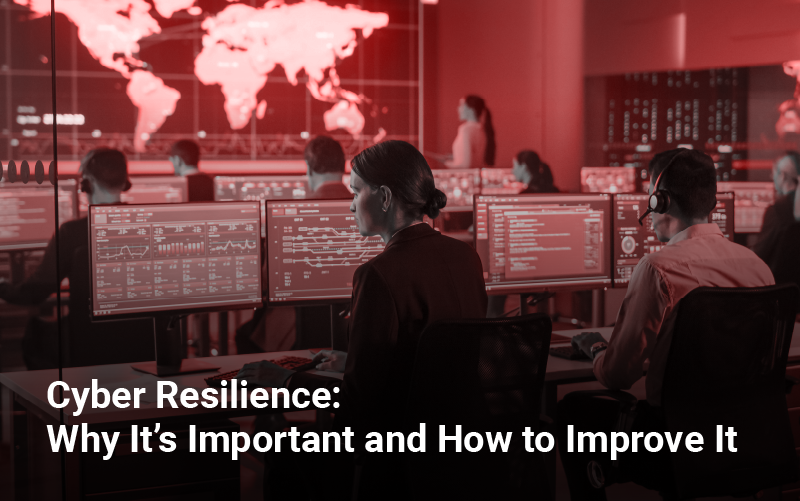In today’s digital landscape, the term “cyber resilience” has become a cornerstone in safeguarding the integrity and functionality of organizations in the face of evolving online threats. While it may sound complex, cyber resilience essentially refers to an organization’s ability to bounce back and adapt when cyber attacks occur. The significance of cyber resilience cannot be exaggerated, and there are concrete steps that can be taken to strengthen an organization’s defenses. This article will explore a series of simple yet effective measures to bolster cyber resilience. These steps, ranging from understanding and managing risks to practicing preparedness, provide a comprehensive roadmap for organizations to fortify their digital fortresses and thrive in an era marked by persistent and dynamic cybersecurity challenges.
Key Reasons Why Cyber Resilience is Essential
A series of strategic steps should be undertaken to enhance cyber resilience. These measures include risk assessment, security policy development, employee training, software updates, network protection, data backup and recovery, incident response planning, regular testing, vendor scrutiny, and continuous improvement. Each phase plays a crucial part in building a robust defense against the ever-evolving landscape of cyber threats.
- Protection Against Evolving Threats: Cyber threats are constantly evolving. Attackers develop new techniques, and vulnerabilities in software and systems are continually discovered. Cyber resilience helps organizations adapt to these changes and stay ahead of potential threats.
- Minimizing Downtime and Disruption: A successful cyber attack can cause significant downtime and disruption to an organization’s operations. Cyber resilience measures help mitigate these impacts by allowing for quick recovery and minimal service disruption.
- Safeguarding Sensitive Data: Many organizations handle sensitive customer data, financial information, and intellectual property. A breach can lead to the theft or exposure of this information, which in turn leads to financial and reputational damage. Cyber resilience helps protect this critical data.
- Maintaining Customer Trust: Customers expect their personal information to be handled securely. A cyber breach can erode trust, resulting in a loss of customers and business. A resilient organization can recover more quickly and maintain customer confidence.
- Compliance and Legal Obligations: Many industries are subject to regulatory requirements for data protection. Cyber resilience is essential for compliance with laws like GDPR, HIPAA, or PCI DSS.
What Steps Can Be Taken to Strengthen Cyber Resilience
To improve cyber resilience, consider the following steps:
- Risk Assessment: Identify and assess your organization’s specific cyber risks. Understanding your vulnerabilities is the first step in building resilience.
- Security Policies and Procedures: Develop and implement robust security policies and procedures. This includes access control, password management, and incident response plans.
- Employee Training: Ensure employees are well-informed about cybersecurity best practices and threats. Employees are often the first line of defense.
- Patch Management: Regularly update and patch software, operating systems, and applications to address known vulnerabilities.
- Network Security: Implement strong network security measures, including firewalls, intrusion detection systems, and encryption protocols.
- Data Backup and Recovery: Regularly back up data and test data recovery procedures to ensure you can quickly restore critical systems and information in the event of an incident.
- Incident Response Plan: Devise a thorough incident response strategy that summarizes the stages to take during a cyber incident. This plan should include communication strategies and coordination with law enforcement or third-party security experts.
- Regular Testing and Simulation: Conduct regular cybersecurity testing and simulation exercises to evaluate your organization’s ability to respond to cyber threats.
- Vendor and Supply Chain Security: Assess the cybersecurity practices of third-party vendors and suppliers to ensure they do not introduce vulnerabilities into your environment.
- Continuous Improvement: Cyber resilience is an ongoing process. Constantly monitor and modify your techniques as the threat landscape evolves.
Achieving cyber resilience is not a one-time effort but an ongoing commitment to protecting your organization from ever-present and evolving cyber threats.
How Can EC-Council University Help with This?
As a premier online institution for cybersecurity education, EC-Council University plays a pivotal role in fortifying an organization’s cyber resilience. EC-Council University offers a range of academic programs, including bachelor’s and master’s degrees in cybersecurity. These programs provide students with a comprehensive, structured education, equipping them with profound knowledge of cybersecurity principles, practices, and strategies. EC-Council University’s approach goes beyond certifications, fostering a deeper understanding of cybersecurity. Graduates are skilled in managing day-to-day security tasks and adept at formulating strategic plans for enhancing cyber resilience.







